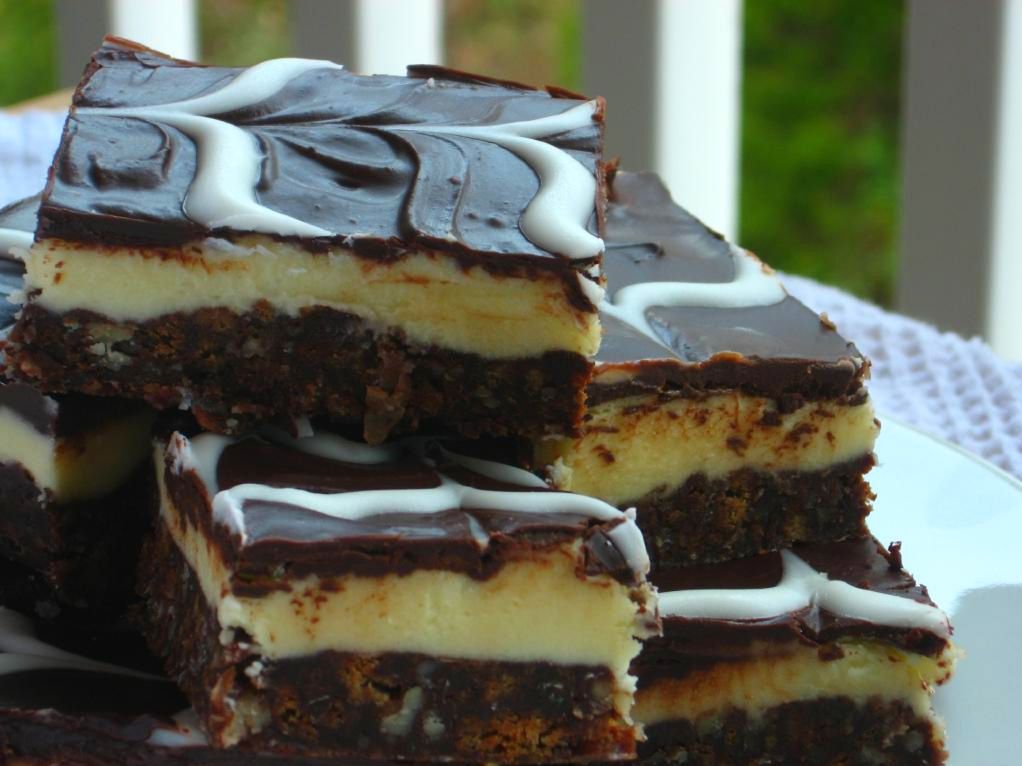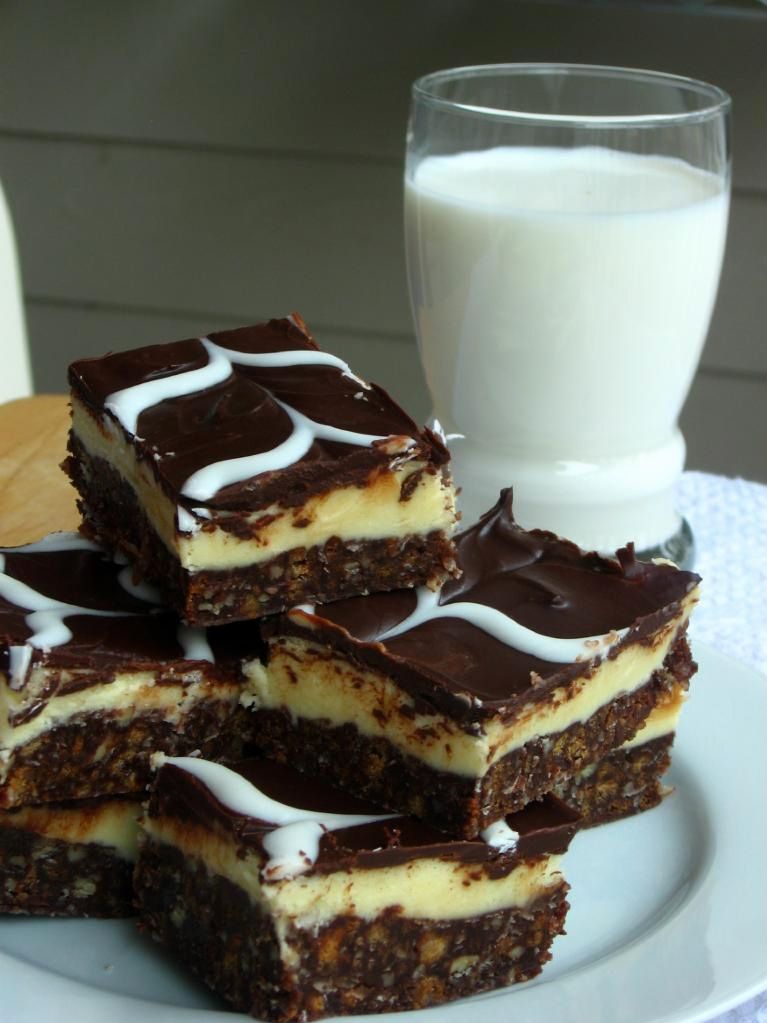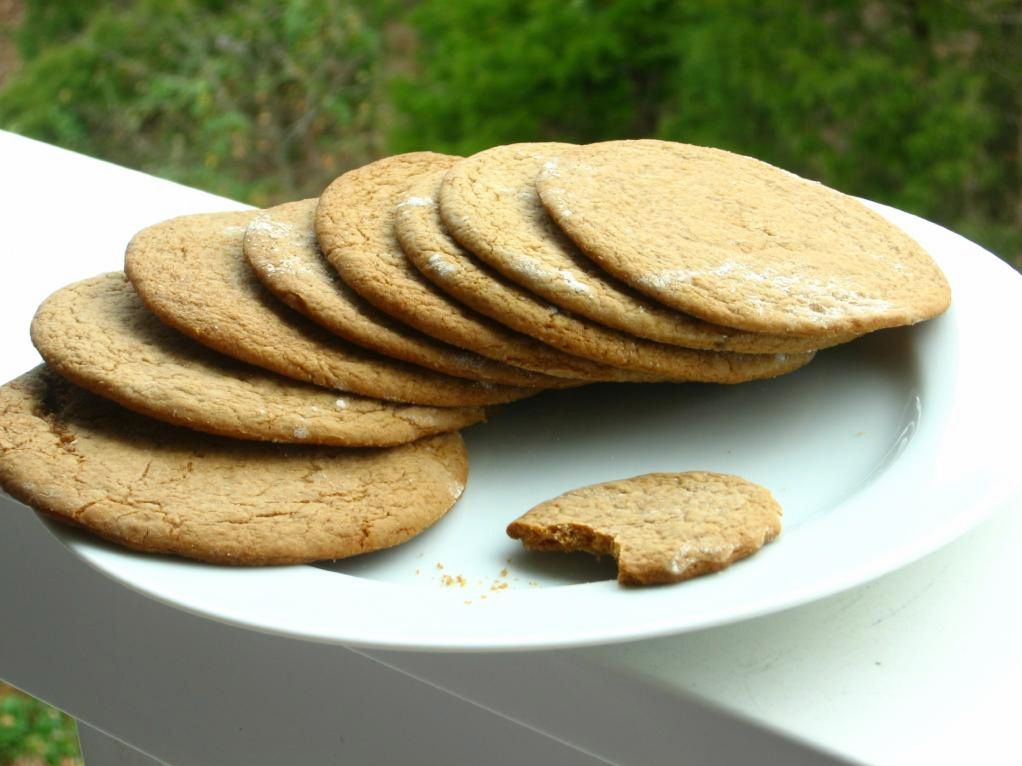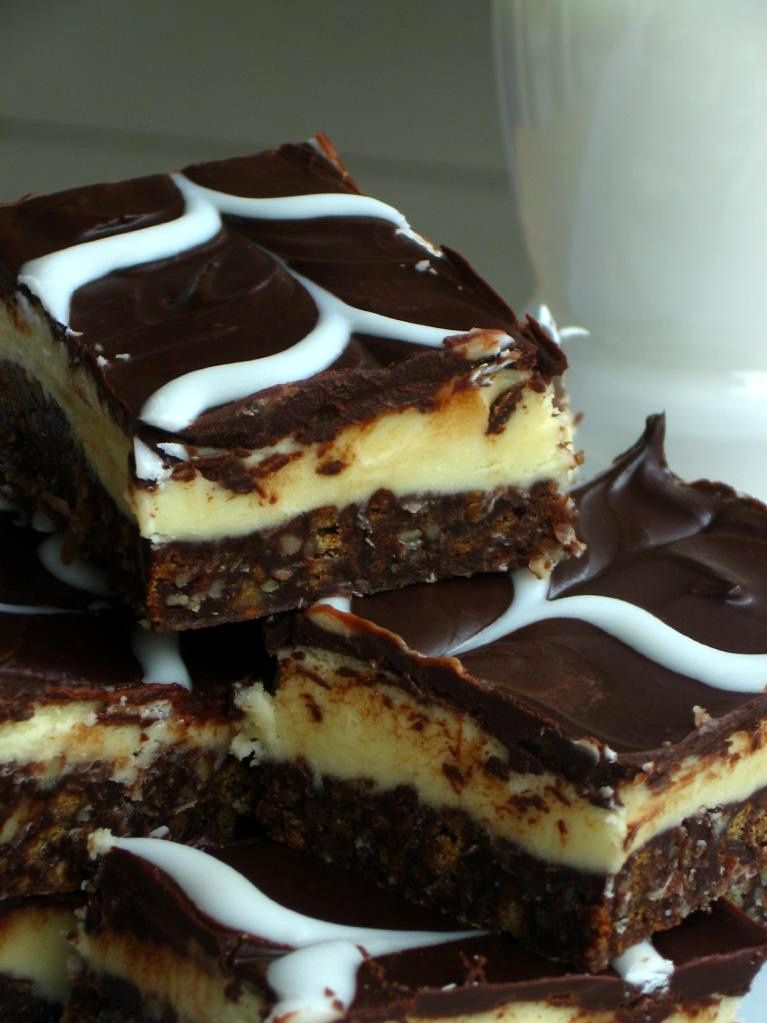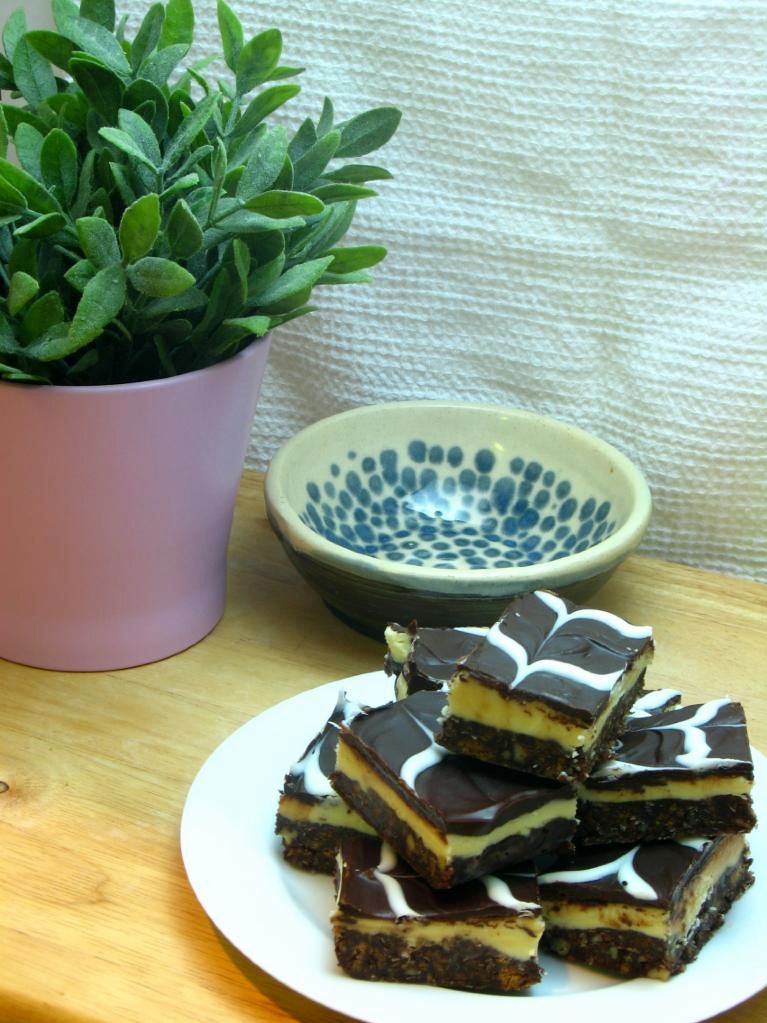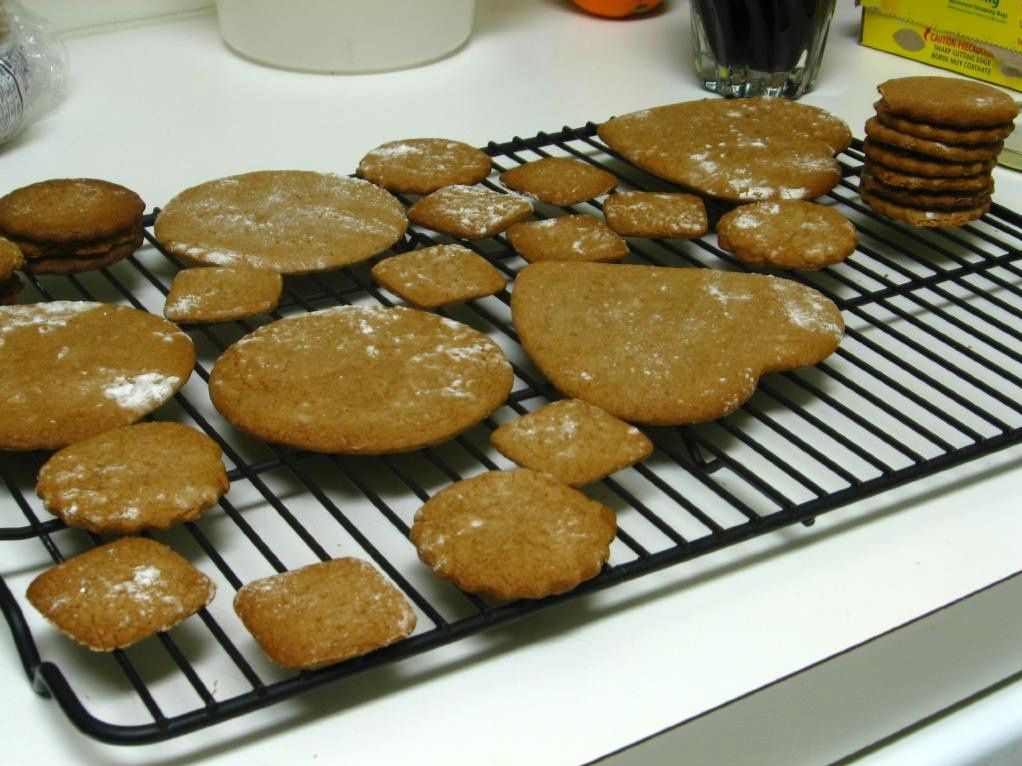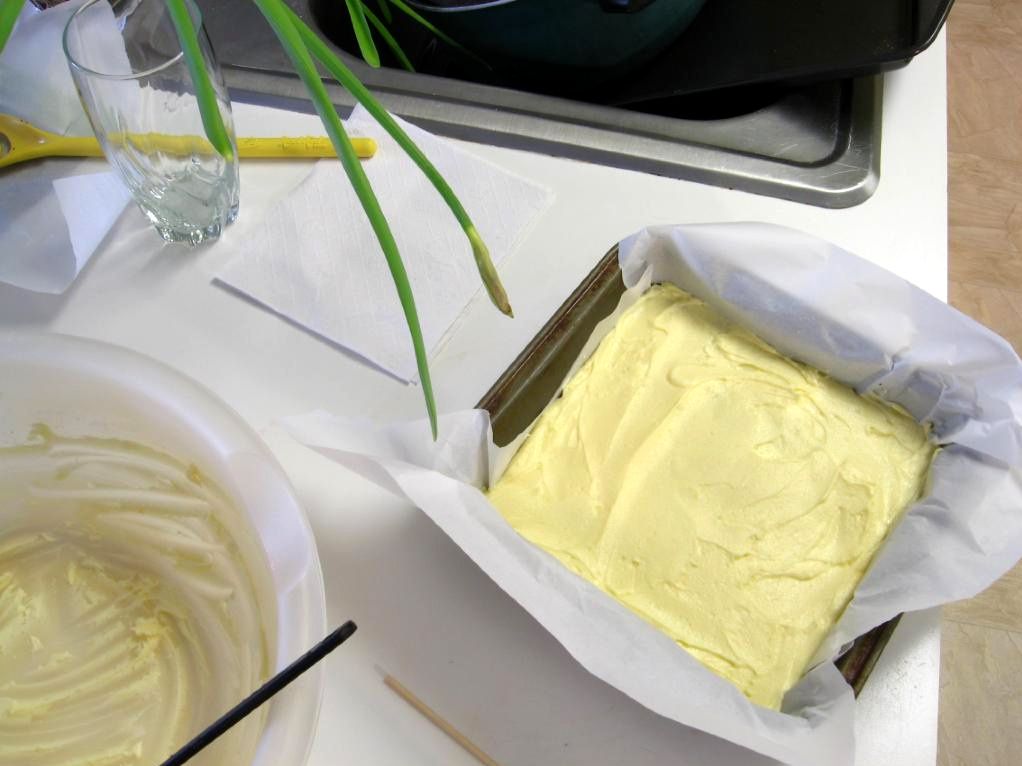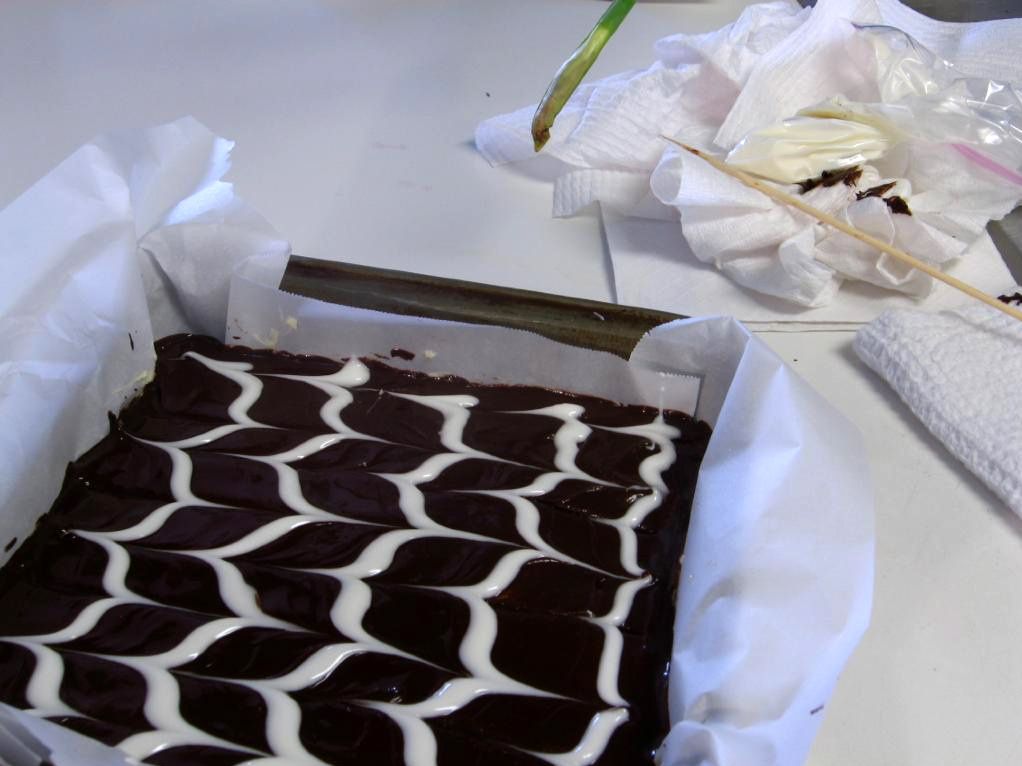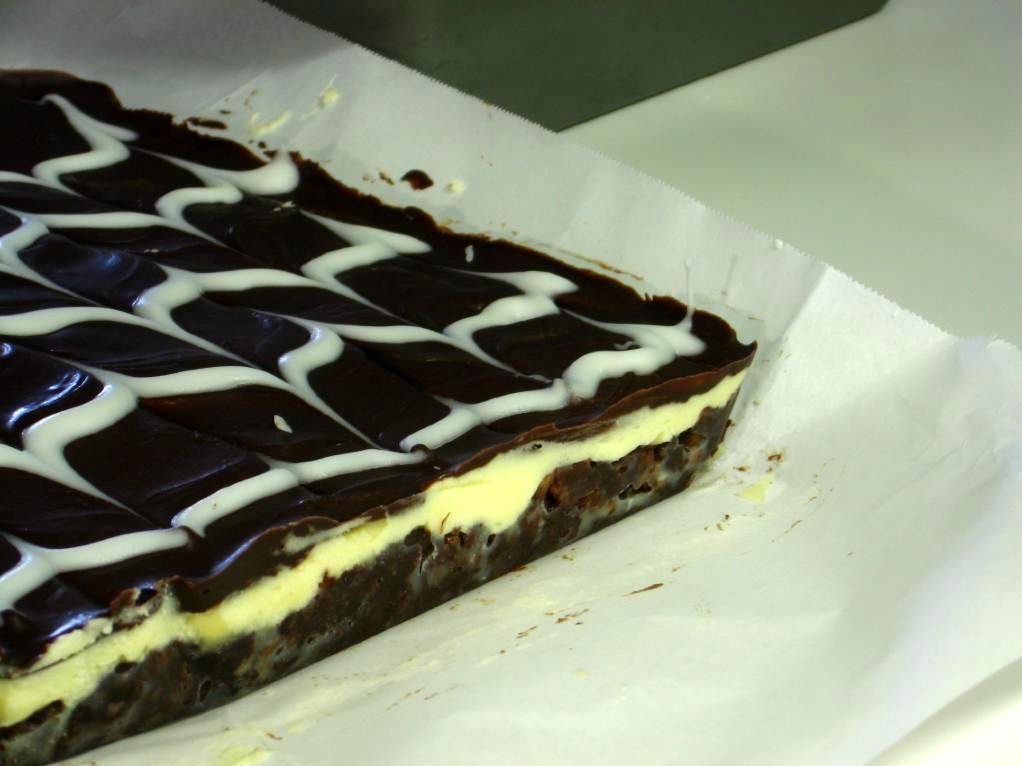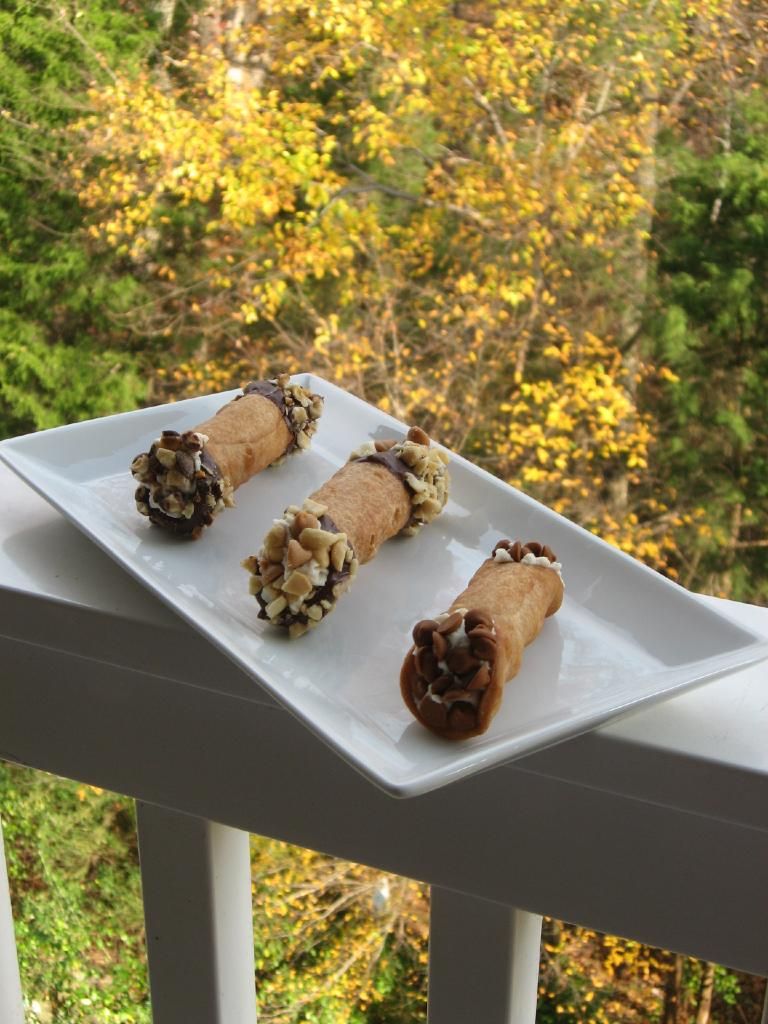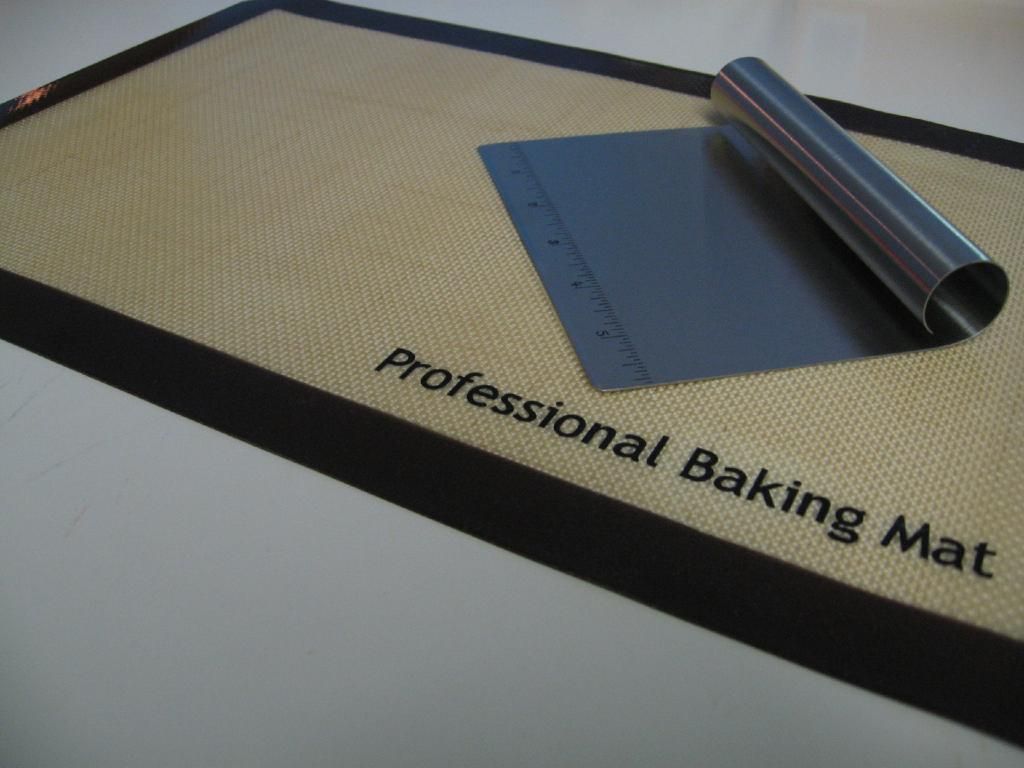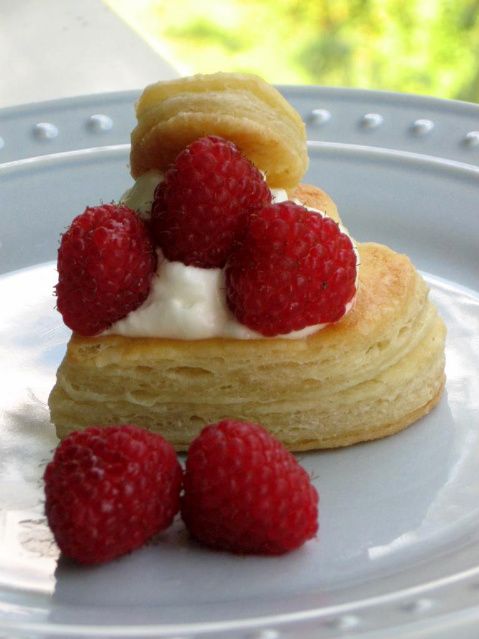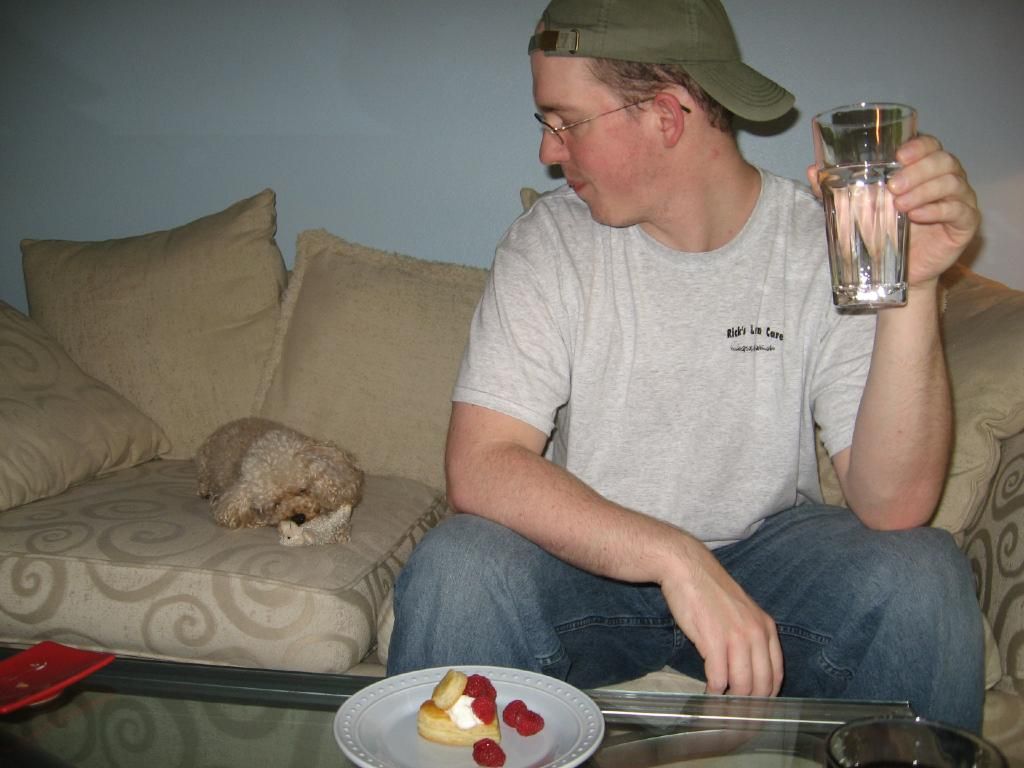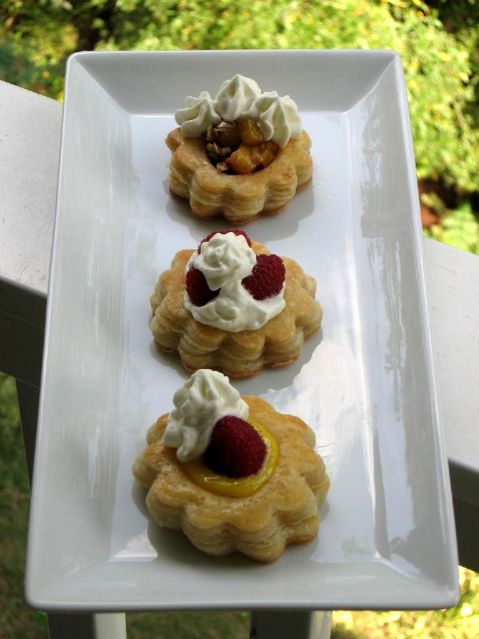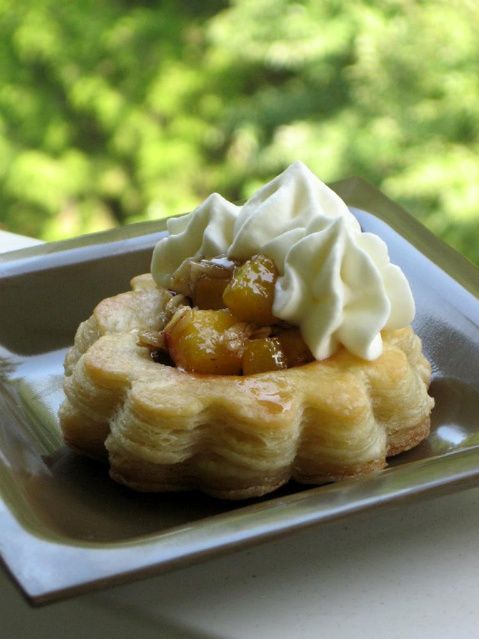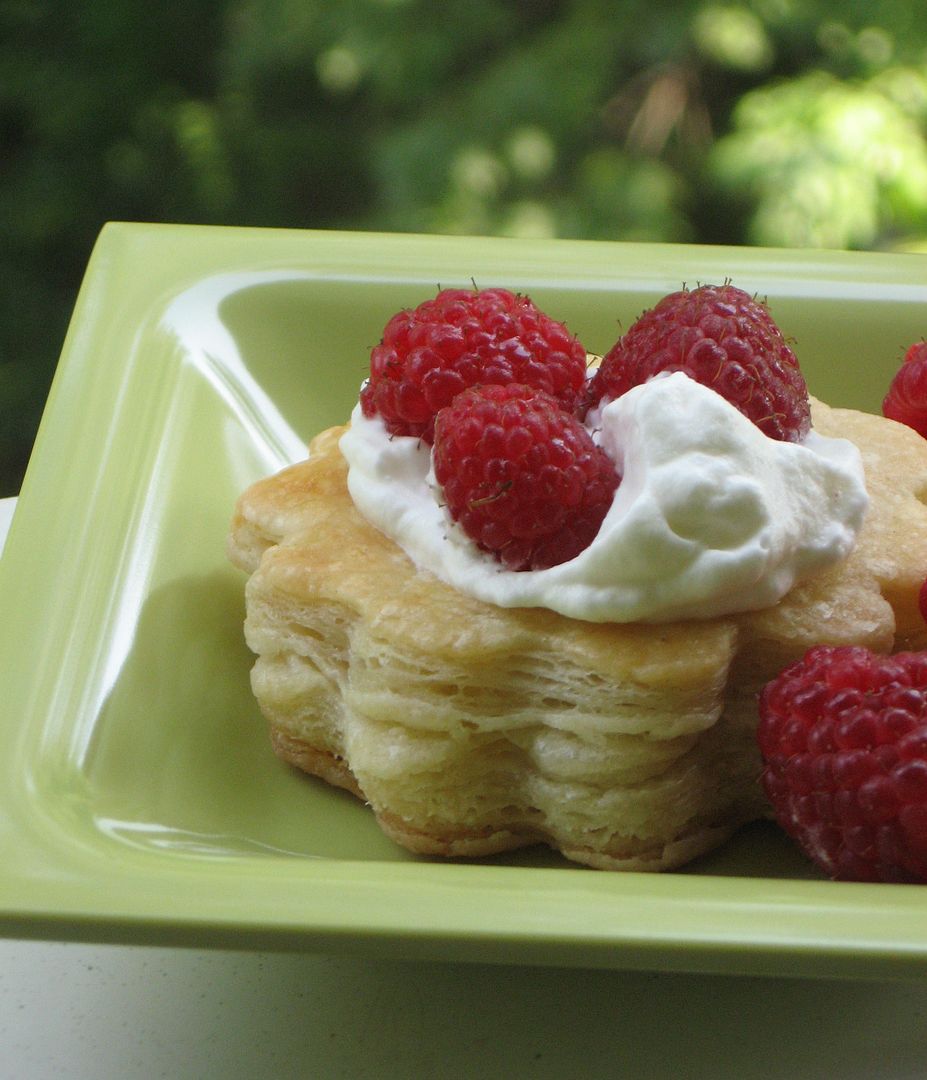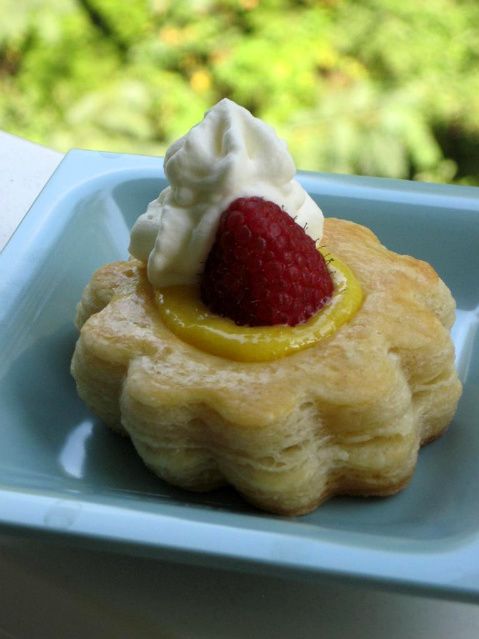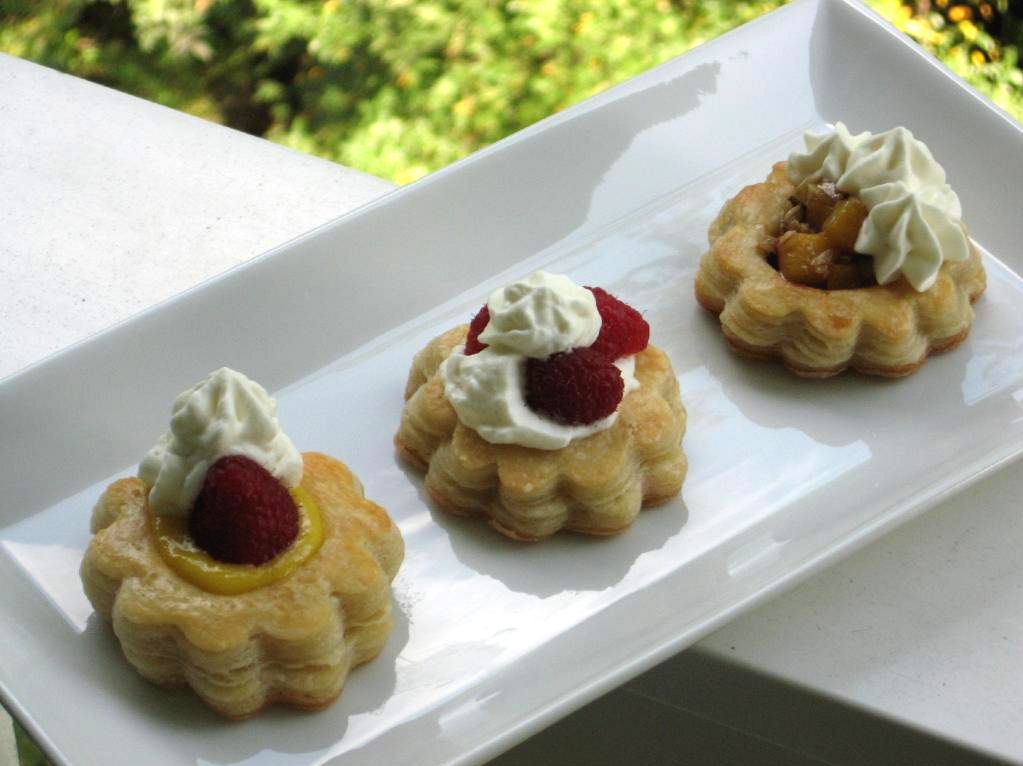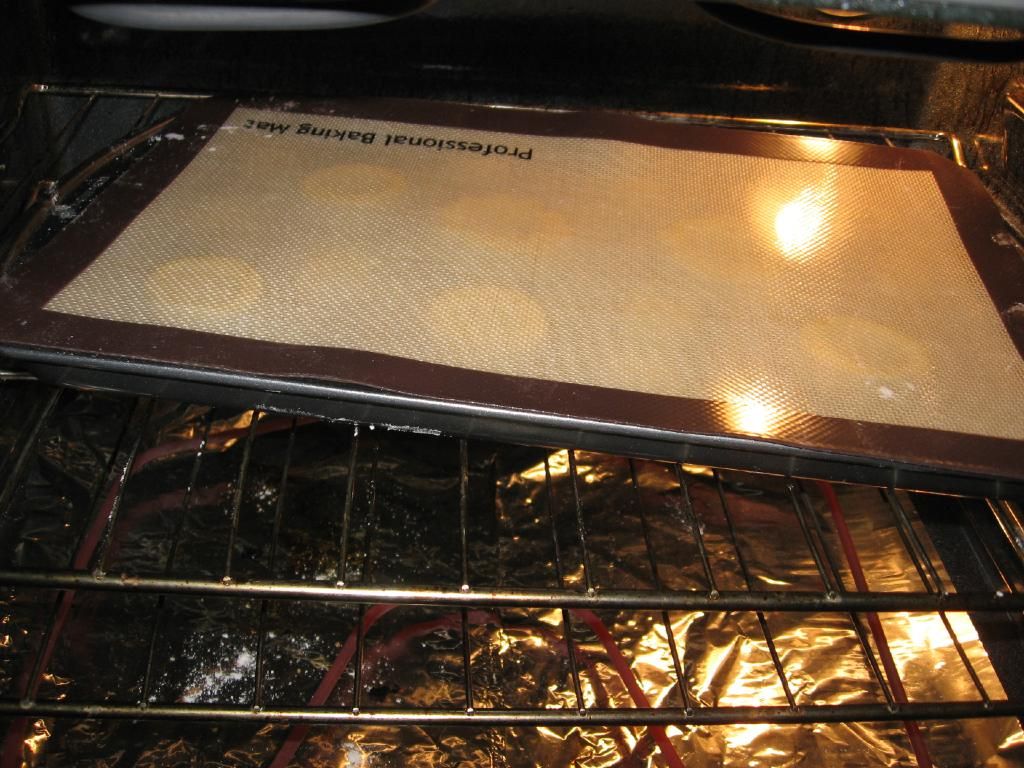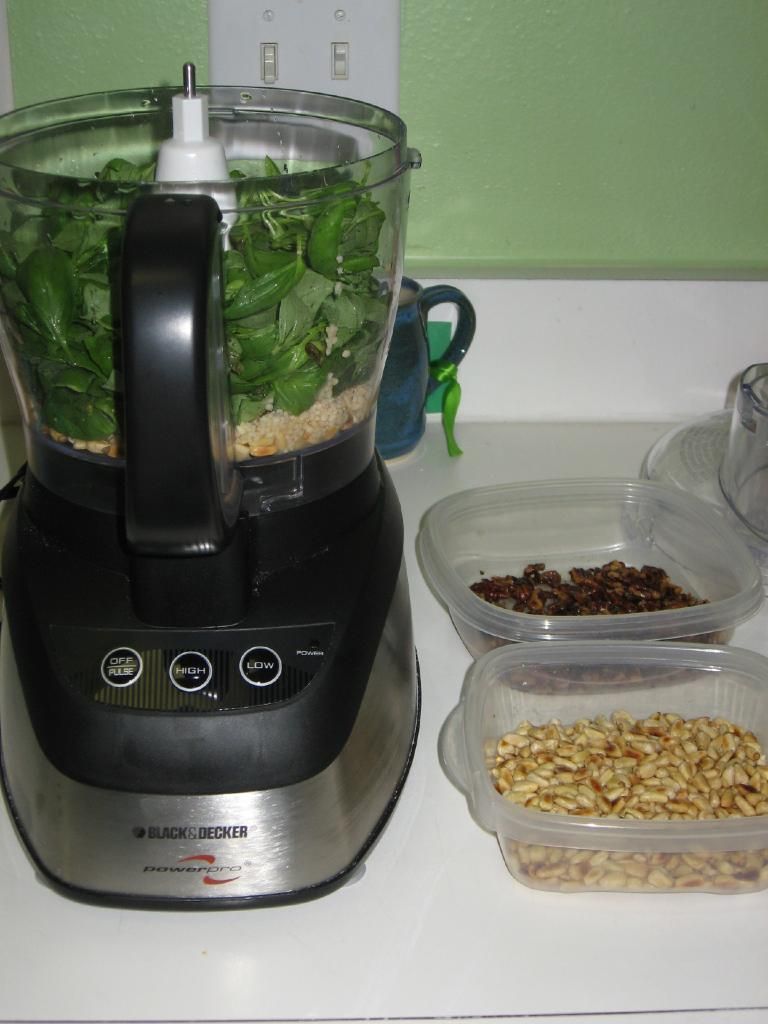This month’s Daring Bakers challenge was spectacular, at least in part because I felt like a cross between Indiana Jones and MacGyver at various points in the process. Minus the archaeological skillz and/or mullet.
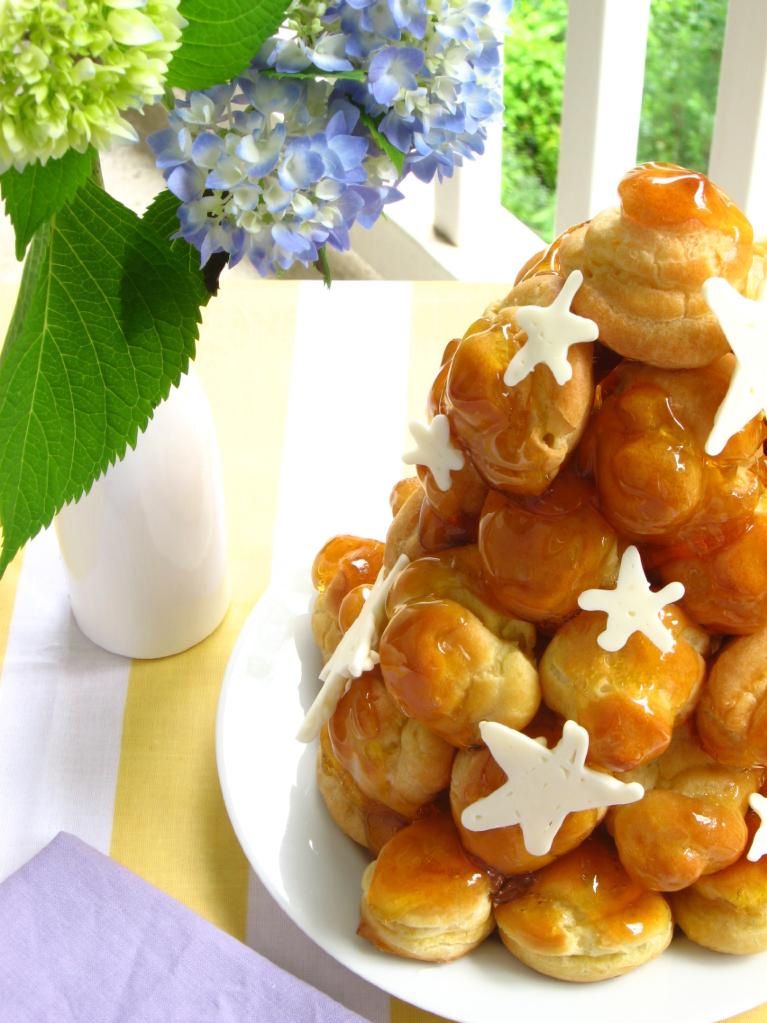
Picture this: a flaming-hot, caramel-dipped cream puff goes flying out of my hands. I instinctively reach up to stop its trajectory across my kitchen, only to be reminded angrily by my neurons that burning sugar is HOOOOTTTTTT (imagine this being screamed in the highest-pitched neuronal voice you can conjure up). I bat the cream puff into the sink (with some panache, I like to think) and plunge my fingers into the nearby bowl of ice water, saving my skin by mere milliseconds. Adrenaline-pumpin’ music plays in the background as I do a double backflip out of the kitchen for a bandaid. Okay, I made that whole last part up. I’m a pretty horrid gymnast.
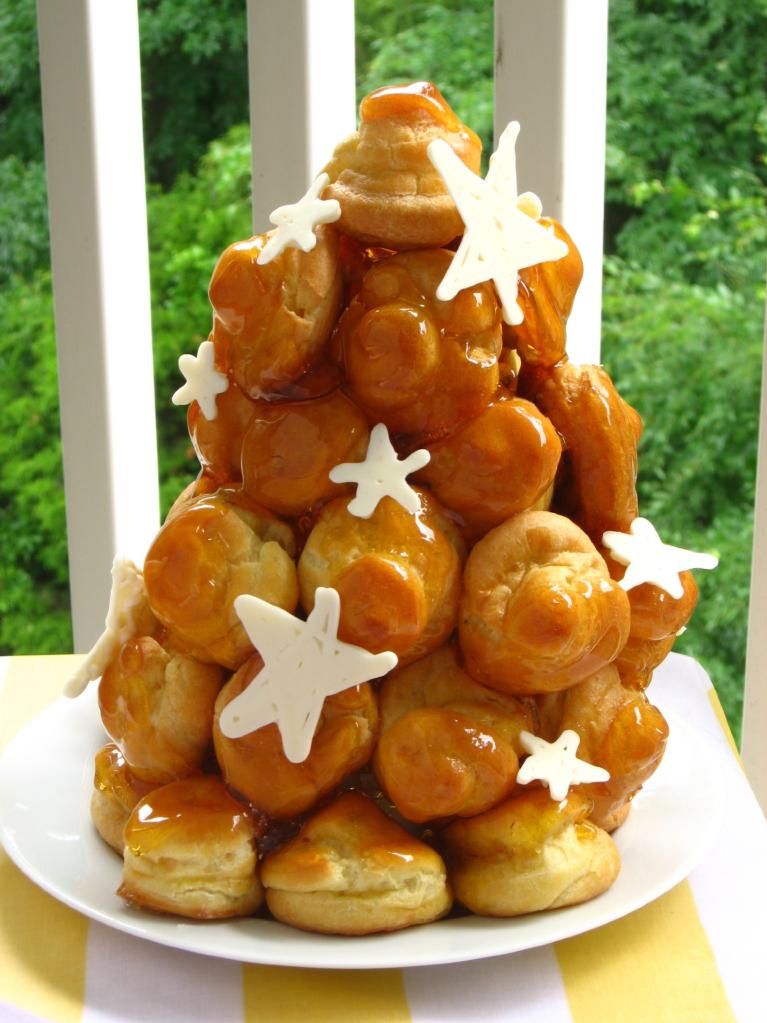
There were several flyin’ flamin’ cream puffs, though. Which would make a good band name, if you’re in the market for one. Seriously, hot sugar, architecture, and time sensitivity put the “daring” in this Daring Bakers challenge, thus providing me with a comeback for Facebook friends who scoff at my daring baking status updates:

Okay, that last part might not help my case.
Anyway, I bet you’re dying to know . . . what exactly is this scary beast of an edible sculpture? The May 2010 Daring Bakers’ challenge was hosted by Cat of Little Miss Cupcake. Cat challenged everyone to make a piece montée, or croquembouche, based on recipes from Peter Kump’s Baking School in Manhattan and Nick Malgieri.
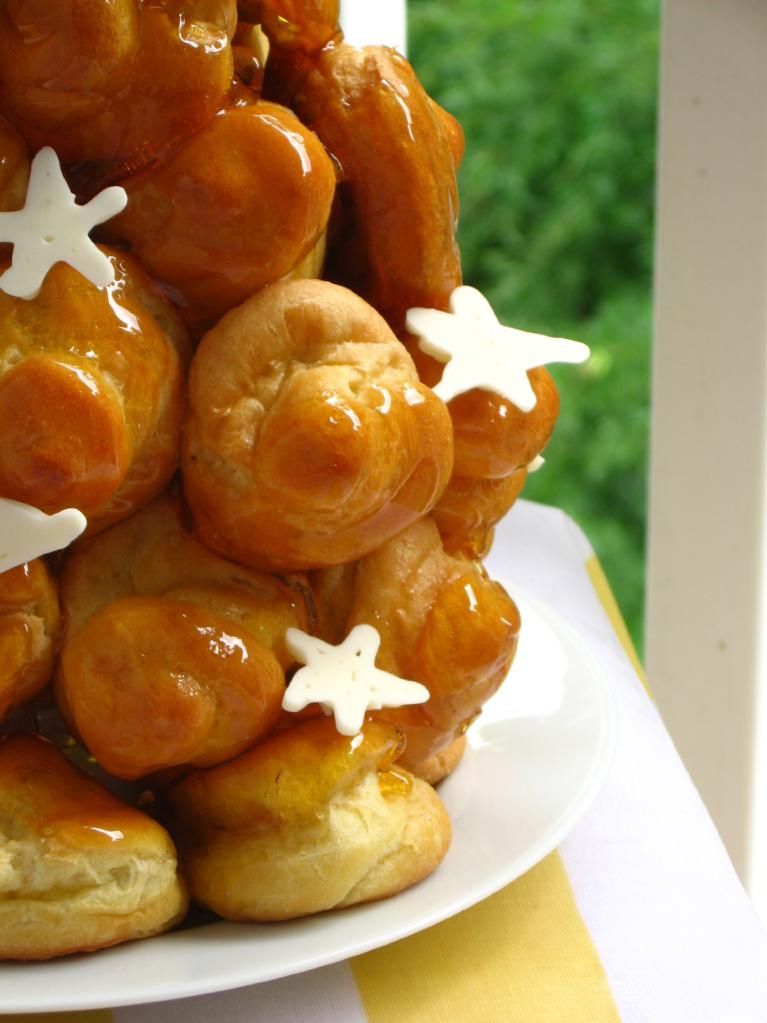
Croquembouche is literally translated, “crunch in mouth,” and incidentally, is a fun word to sing in various overly-dramatic ways while you cook. Besides being a pretty cool word, it’s a pretty cool party trick. You bake up some buttery, light, delectable puff shells that are naturally hollow (so convenient). You resist eating too many of these straight from the oven, let them cool, and stuff them plumb full of light, blissful caramel cream. You then use a hard caramel glaze as mortar to build them into a lovely cone, from which your guests can gingerly pluck their dessert.

This particular combination — the caramel cream and caramel glaze — was heavenly, especially the cream. I’m having fits wanting to stuff the caramel cream into all sorts of confections — cupcakes, tarts, other pastries, my mouth with a spoon. It has a buttery, silky caramel flavor.
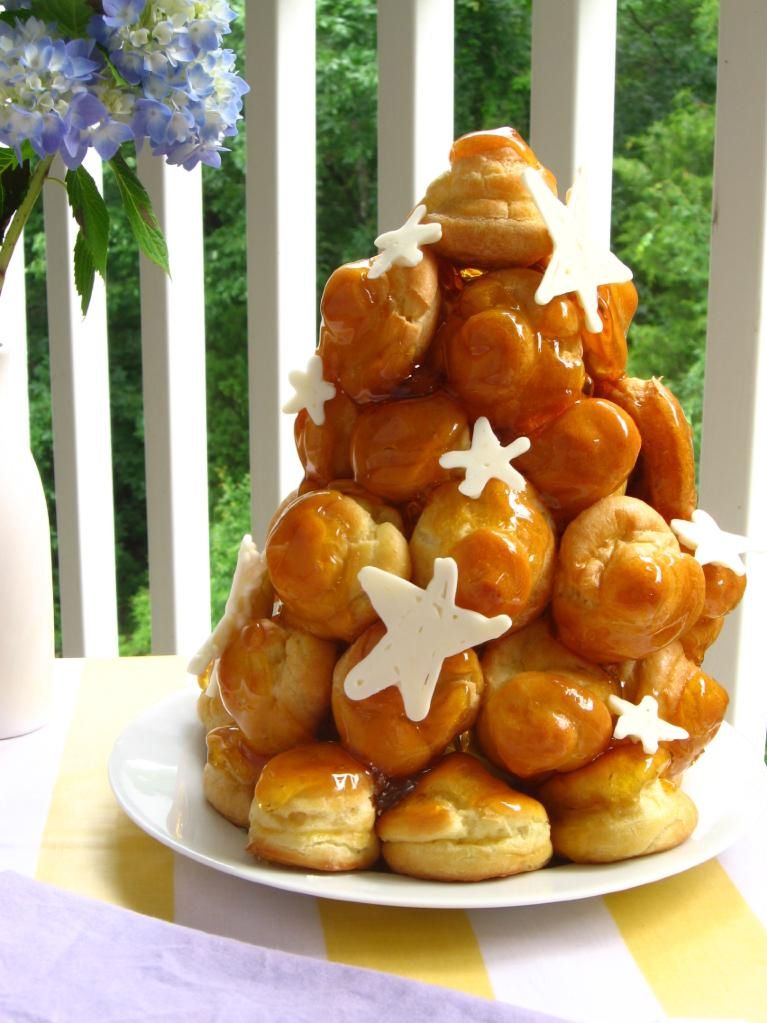
As for the caramel glaze, I’m downright torn as to whether to recommend it to you or not. On one hand, it became very brittle and, as it cooled, left a thicker and thicker layer on the puffs I was dipping. This was fine, except that when it hardened, it was sometimes sharp to bite into.
On the other hand, as I ate over half of this croquembouche all by my lonesome (did I just admit that?), I fell in love with the incredible deliciousness of it. And though you can use melted chocolate to assemble your ‘bouche, I have a feeling this caramel was a much better mortar. It hardened in mere seconds and kept the puffs nearly immobile, creating a sound structure. So, I’m tempted to say . . . just make it and chew carefully? Is that weird? Feel free to substitute if you’re a cautious eater.
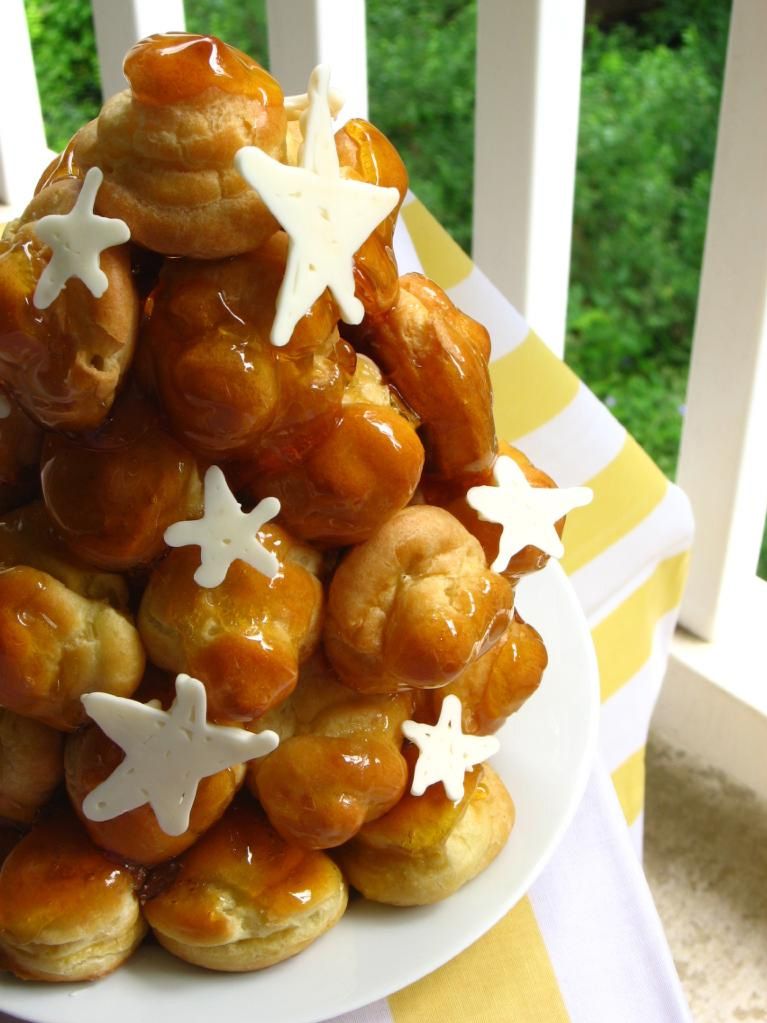
The cream puffs with a thin coating of caramel did have a pleasant crunch instead of sharp shards, so another tip is to dip puffs very quickly while your caramel is fluid and the excess can drain off. Then, instead of reheating the caramel if it gets thick (which wasn’t that effective for me), I might make a new batch. You could work in half-batches of caramel to reduce waste.
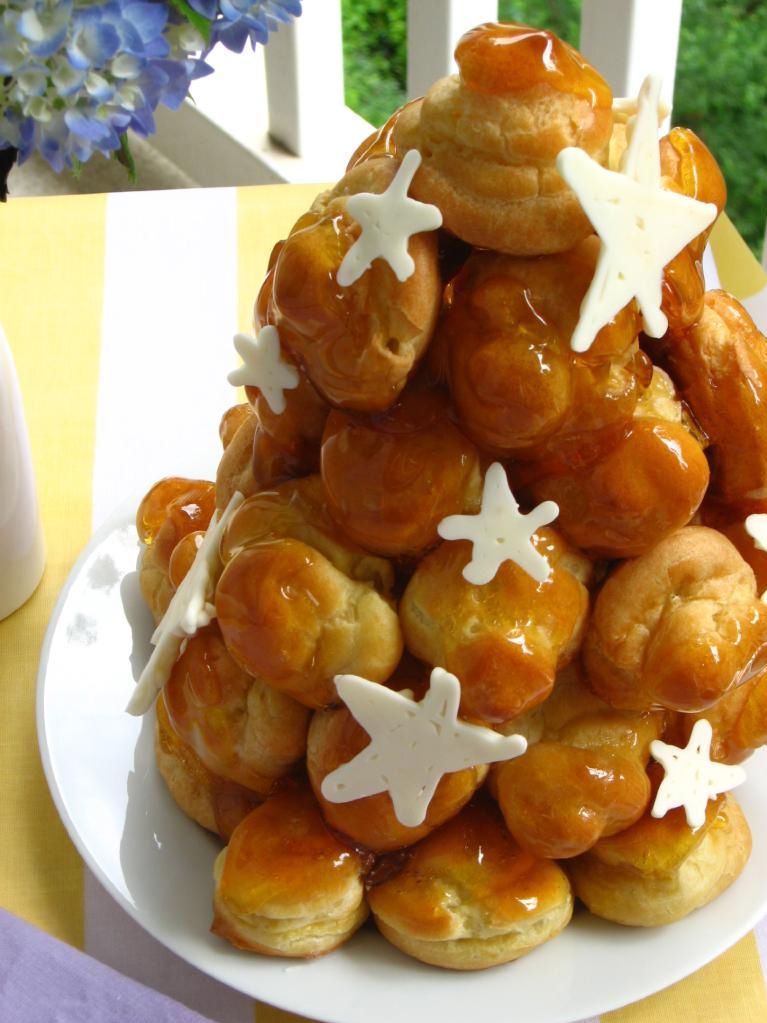
Don’t be nervous because this recipe seems fussy. The actual cream puffs and tower were surprisingly simple to create, and if you have trouble with caramel, the addition of sugar temperatures in the recipe below should help. Activate your inner-architect/daredevil, impress your friends, and enjoy your scrumptious structure!
Caramel Cream Croquembouche
Recipe by: Adapted from Peter Kump, Nick Malgieri (puffs), and Martha Stewart (caramel cream and glaze)
Yields: a tower of about 51 puffs
Pâte à Choux (Puffs) Ingredients:
1 1/8 cups water
9 tablespoons unsalted butter
3/8 teaspoons salt
1.5 tablespoons sugar
1.5 cups all-purpose flour
6 large eggs
Egg wash (1 egg yolk and 1/2 cup heavy cream, lightly beaten)
Caramel Cream Filling Ingredients:
3/4 cup sugar
1/8 cup water
1 cup heavy cream
1/8 cup creme fraiche or sour cream
1/4 teaspoon pure vanilla extract
Pinch of coarse salt
Caramel Glaze Ingredients:*
2 cups sugar
4 tablespoons water
2 teaspoons fresh lemon juice
white chocolate bark for decorating (optional)
Directions: Make the caramel cream at least a few hours ahead of time to give it a chance to chill before its final step (I made mine 3 days in advance). Prepare an ice-water bath. Heat sugar and water in a medium saucepan over medium-high heat until mixture boils and sugar dissolves, washing down sides of pan often with a wet pastry brush to prevent crystals from forming. Reduce heat to medium, and cook until sugar turns dark amber (about 345 degrees on a candy thermometer), 5 to 7 minutes more. Immediately remove from heat, and carefully whisk in 1/2 cup cream. Return to medium heat, and cook until sugar melts completely and mixture boils.
Remove from heat, and pour into a bowl set in ice-water bath. Let caramel cool, stirring often, for 10 minutes. Stir in creme fraiche, vanilla, and salt. Cover and refrigerate at least 2 hours or up to 5 days.
Just before you are ready to fill the cream puffs, beat remaining 1/2 cup cream until stiff peaks form. Gently fold into caramel sauce, using a rubber spatula, until incorporated. Whisk to thicken, about 1 minute.
Make the pâte à choux. Combine water, butter, salt and sugar in a saucepan over medium heat. Bring to a boil and stir occasionally. At boil, remove from heat and sift in the flour, stirring to combine completely.
Return to heat and cook, stirring constantly until the batter dries slightly and begins to pull away from the sides of the pan. Transfer to a bowl and stir with a wooden spoon 1 minute to cool slightly.
Add 1 egg. The batter will appear loose and shiny. As you stir, the batter will become dry-looking like lightly buttered mashed potatoes. It is at this point that you will add in the next egg. Repeat until you have incorporated all the eggs.
Pipe the batter using a pastry bag and a plain tip. Pipe choux about 1 inch-part in the baking sheets. Choux should be about 1 inch high about 1 inch wide. Using a clean finger dipped in hot water, gently press down on any tips that have formed on the top of choux when piping. You want them to retain their ball shape, but be smoothly curved on top. Brush tops with egg wash while trying not to drip the wash down the puffs onto the pan (which could somewhat inhibit rise).
Bake the choux at 425 degrees F until well-puffed and turning lightly golden in color, about 10 minutes. Lower the temperature to 350 degrees F and continue baking until well-colored and dry, about 20 minutes more. Remove to a rack and cool (tip from a pro: poke each puff with a toothpick while cooling to release the steam inside. It shouldn’t cause your cream to leak, but will help the puffs stay crisp). Can be stored in a airtight box overnight, but I recommend, if you aren’t using them right away to create your croquembouche, that you freeze them. When you’re ready to use them, bake them at 350 degrees F for 5-6 minutes to refresh and recrisp them. When puffs are cool, use a thin, plain tip to fill them generously with caramel cream.
Prepare the plate your croquembouche will be assembled on with wax paper around the edges to catch excess caramel. Set up your work area: two baking sheets covered in parchment for the caramel-covered puffs to dry on, an ice-water bath to stop the caramel from cooking and for any burnt fingers. Once you’re set up, you’re ready to begin assembly.
Make the caramel glaze: Prepare an ice-water bath. Bring all ingredients to a boil in a small saucepan over medium heat, washing down sides of pan often with a wet pastry brush to prevent crystals from forming. Cook, without stirring, until sugar dissolves, 5 to 6 minutes. Raise heat to high, and cook, swirling pan to color evenly, until syrup is amber (about 325 on a candy thermometer), about 5 minutes. Remove caramel from heat, and set bottom of pan in ice-water bath for a few seconds to stop the cooking. Use immediately, working as quickly as possible.*
Assembly: Dip top half of each filled puff into caramel (be careful not to burn your fingers), letting excess drip back into pan. Transfer to a parchment-lined baking sheet. Let stand until caramel is set.
Carefully dip bottom half of 1 puff into caramel, letting excess drip into pan. Transfer puff, hot caramel side down, to a serving platter. Repeat with more puffs, forming a connected ring as you work. Repeat with more puffs, layering rings to form a pyramid, using 45 or 50 puffs total. (If the caramel begins to harden, reheat briefly over low heat.)*
*Note: Reheating the caramel did not work so well for me, and even qorking quickly wasn’t quickly enough — and as mentioned above, when the caramel cools, it settles thickly on the puff and can become a brittle hazard. Thus, you may want to make a half batch of the caramel at a time, starting over if your caramel gets cool/thick, so that you can ensure a thin coating on each puff.

Enjoy!
P.S. Don’t forget to go see the stupendous structures of other Daring Bakers!

